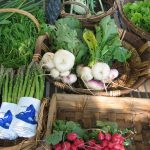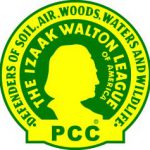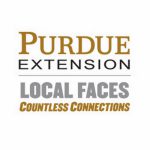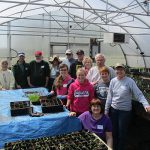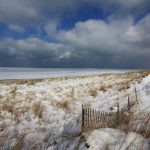The following is a transcript of a podcast that was recorded on January 29, 2013. To listen to the podcast, click here.
Paul Quinlan, Stewardship Director for Shirley Heinze Land Trust, speaks with host Kathy Sipple about the organization’s Little Calumet Wetlands project area and the opportunities it provides for recreation, environmental education, and watershed management.
KS: Hello and welcome to today’s episode of 219 Green Connect where we discuss topics about the environment and green living in Northwest Indiana. For show archives, news, and upcoming events please see our website, www.219GreenConnect.com or connect with us on Facebook or Twitter. You can also subscribe to our podcast on iTunes.
I am honored to day to have Paul Quinlan from Shirley Heinze Land Trust, Thanks for joining me Paul.
PQ: Sure
KS: And Paul, you are the stewardship program manager?
PQ: Yes
KS: If you want to find out more about Shirley Heinze, we have had them on a few times in the past and you can get to their website at Heinzetrust.org so you can find out more about Paul, the rest of the staff and the great programs they have.
Today we are going to talk about a particular project, tell me a little bit about that.
PQ: It’s the Little Calumet wetlands project, it is centered around Chesterton and the idea is to acquire properties in the floodplain of the Little Calumet river to improve public access to the river and protect the habitat that occurs there.
KS: Great, how long has that been going on or what is the progress to date?
PQ: Officially it started a few years ago, although there were two parcels that were donated right along the river about twenty years ago. They were very small, about an acre each. It was one of the donations we took in the early days because we didn’t turn down any donations because we were a brand new and trust. By themselves they didn’t make sense as a nature preserve but we held onto them. In 2010, we acquired about 30 acres along the Little Calumet River. The locations of those are at Brummit road and Indian Boundary. We acquired that from a developer. I believe he had bought it and didn’t know it was wetlands so he agreed to sell it to us at a discount and with donations from NIBSCO and several of our individual donors we were able to do a fund drive and acquire those thirty acres. Then a few months later we were able to add a thirty acre tract, just to the south of it, adjacent to the property which brought the preserve up to thirty two acres. The 11 acre property actually gave us access to the property from the road. Because of the way Brummit road is elevated above the wetland, you couldn’t really get into the property. This 11 acres made the whole preserve more accessible from the road. We were able to put in a little pedestrian bridge and have a little hiking trail that goes along the edge of the channelized river, so that was great.
KS: I’m trying to think, this is probably something I should have checked out prior to our conversation, Was there another preserve there previously? Just east of Brummit?
PQ: If you go far enough on Brummit, you will pass the Heron Rookery. Our project is situated in a good place because as we acquire lands on the Little Cal, our grand vision is to create a corridor between the Heron rookery and the baily homestead area of the national lakeshore.
KS: We have talked about this before, where you have contiguous pieces of land, you can do much more for the wildlife and you can do more things, you’ve got like a wildlife economy of scale if you will. Is that a good way to put it?
PQ: Yep and so having things connected, particularly along areas that are naturally connected like along a river or corridor, actually it’s a good opportunity for animals to move where they need to along the river as habitat becomes available to them and to escape any threats like floods or whatever other changes sometimes. One change to point out, is the Emerald ash borer that has been destroying ash trees, so it’s really changing the forest composition because ash trees are disappearing. There used to be a lot of ash along the floodplain so having these areas up for restoration, we can try to mitigate these changes we are able to maintain forest cover which is important for several bird species and to hang onto the diversity of the landscape
KS: I’m awfully glad you are on it! So it started with two acres, got 30 additional and recently 11 more so I’m not a math whiz but that would be 43 acres.
PQ: Yep and just in the last few days of 2012 we acquired an additional 37 acres, donated to us by a local family. That’s going to be named in memory of a family member who passed away. It is located on the north end of the Calumet Road in Chesterton. It’s on the West side of Calumet road. It’s a big complex of forested wetlands that stretches from Calumet road all the way over to Wagner road and it’s bounded by 94 up north. You can see it on Google maps; it’s a pretty large forested area. About 2/3 of it is river floodplain, so hopefully that preserve will expand to include most of the hundred or so that is available there so this is prime habitat. It’s a good place to be protected and it provides natural flood control so the floodplain takes on the extra water that comes through the river during a flood event and lets it flow out slowly. So it’s not flooding places downstream. It’s also wonderful habitat for amphibians and birds. We are really excited about this newest thirty acre acquisition because it’s in really good shape, biologically speaking. It has a really diverse sedge community and a lot of little wetlands here and there and usually along a major river corridor you expect to find a lot of invasive species that have been brought in with a lot of floods and its pretty clean in terms of that so it’s great to really get in a place and preserve it by keeping invasives out instead of removing them once they have become established
KS: Every talk we have generates so many questions so I will keep it reeled in a little bit. So this new 37 acre parcel, you said it doesn’t have a lot of invasive species, why is that? Was it the family that kept it up that way or was there some natural protection?
PQ: That is a really good question. The family wasn’t out there managing it or anything so I think it’s a little bit dumb luck and a little bit probably just the way the water flows through there perhaps doesn’t get inundated from the upstream end, I think the water filters in a back water sort of way when it flows because the channelized river that goes through there. They dredged and made an artificial channel and there is a little levy over the current river bank and it serves as a little barrier to the flood plain so water has to find its way through there a little more slowly which may have changed the direction of some of the seeds that were flowing down the river. Other than that it’s amazing, it just hasn’t gotten there yet. There are plenty of other areas just upstream, like where Coffee Creek comes through downtown there’s a part with a lot of cattail and reed canary grass growing in it and that joins the Little Calumet River just upstream of where this property is so I think it just hasn’t made it there somehow. It’s a good opportunity for us to work with some partnerships like; Save the Dunes conservation fund is working on a watershed management plan for the Little Calumet River. That is going to involve the major tributary of the Calumet River which is Coffee Creek. That involves the Coffee Creek Watershed Conservancy which has a park on 49 just north of fork road. They are doing a lot of work there to remove invasive species on their property and we are working with them through the local cooperative weed management area which is a coalition of some conservation groups to try to tackle invasive species on a landscape scale. Working through that avenue we hope to involve other agencies such as the Chesterton Town Parks to be able to get them involved in some projects where we could do some invasive species control work on their property and therefore keep it from spreading to other protected natural areas.
KS: Could you tell me the name of that local weed management, is that an official group or is that a loose cooperation?
PQ: It’s official because we have a, MOU, sorry, a Memorandum of Understanding, which all of the partners signed. Its voluntary but the understanding formalizes our partnership.
KS: I had not heard of that one before.
PQ: Yeah, we are going to have a public meeting at the end of February and invite some park managers and some municipality to get people involved in weed management
KS: Well it seem like it’s a big deal around here since we have got such interesting biodiversity but also invasive species. Not to take the spotlight of off what you’re doing but on Thursday of this week I am talking to someone from the Indiana Native Plant Society I have recently become aware of them. There are a lot of groups out there that are trying to accomplish the same things from different angles. Very cool, all of the stories about collaboration. That’s whys I started 219 Green Connect, trying to help people connect the dots and hear not just about how organizations are working together but also how the average Joe can get involved and that leads me to my next question which is, now that you’ve got these parcels, what does that mean for recreation activities and also for volunteer activities?
PQ: There’s lots of volunteer activities and that involves establishing some recreational activities. At the original preserve that we have over on Brummit road, we hope to be working with the northwest Indiana Paddle Association to do a little bit of tree removal on the river channel itself so the river is passable when the water is high enough for people to canoe and kayak along the river. We do have that one small trail right there. We also want to put in a more durable canoe launch. Right now people launch from the bank which will work for a while but that will start to get eroded so we want to put in some decking that will withstand the floods but be able to provide access for people to get out in the river and then we will open up the new preserve. We will be having a trail go through there once we work out some access, not issues but we have one access lane to get to the property from the road, so once we figure that out we will have a trail but we have some opportunities for people to come out and help us study the preserve. People who love bird watching, we would love to get their lists of what they see on the property or any property of ours. Also, we are going to be compiling our plant list for the property as spring comes. We haven’t done anything since last fall since a lot of things had died back already.
KS: It’s almost like taking inventory when you get in a business. You need to look around and say, what have we got here in the way of wild life and plants? That’s great, so you’re looking for volunteers to help out with all of that and do you post those opportunities on your website or how would people find out about the specific.
PQ: Yeah, the website is probably the easiest place to find that. You can find Shirley Heinze on Facebook and we post announcements on our Facebook for volunteer events. We are trying to get better about doing press releases for each one so you will see it in the paper as well but definitely go to our website and that has our calendar for the year. We will update as events get planed.
KS: I want to put in a plug for the 219 GreenConnect website. One of the things we have there that is the best value to our listeners is a calendar of events and we do try to also copy your events there so I think volunteer events are a great way for people to get out there and see why it is important that we care about all of these things we talk about here on the show. We have a guest blogger, Sarah Weaver who has volunteered as an intern for green drinks, the monthly meet up for 219 Green Connect. She actually wrote about her experience volunteering for your organization and how life changing that was for her so that was kind of cool. It can really make a difference in how people interact with the environment but also with providing a sense of connection of value for themselves so kudos to you. Yeah if you haven’t seen the post you might get a kick out of hearing it from a volunteer’s perspective.
PQ: Yeah, Absolutely I’ll take a look at it.
KS: So you get these volunteers out there and your taking inventory probably once we get into the growing season and what’s the longer term plan. Is there a long term plan or do you need to develop a plan?
PQ: Just kind of protecting it and keeping out invasive species as they come, up as they will, and then maintaining a decent trail through there so the public can come in and enjoy it and be exposed to these little gems of nature that we have in northwest Indiana. There are plenty of them out there but they aren’t always easy to get to. It’s a good chance to increase public awareness, particularly with the Little Calumet Wetlands project. If people get to see the river itself up close, that will hopefully help them make a connection between the things they do near their house in the watershed that affects the river and the water quality itself and things they can do like using a rain barrel to collect water off of your roof instead of sending it down the street to the storm sewer. That helps the infrastructure we have function better and helps keep pollutants out of the river ultimately.
KS: Save the Dunes put on a really good workshop last year, I think in February and I hope they do it again but it was called, Greening the Yard, and it was to teach homeowners steps they could to, just as you said, manage the watershed and things, like not doing your washing machine on already rainy days when the watershed is challenged by naturally occurring weather. The rain barrel, as you said, and some people are putting in rain gardens which are very interesting.
PQ: Yeah, rain gardens; you can use native plants instead of turf grass helps a lot because you can take water right into the soil instead of running off.
KS: Yeah, I don’t know if you work at all with JFNew, but I had an opportunity to go out to their facility in Walkerton and see how clean the water was at each step of the way, just being cleaned by native plants. Not just, but it was really pretty fascinating. I was skeptical but when you see the water quality samples tested at different points, Its very cool. I guess that’s one point I want to get to. You have mentioned two different parcels that your group has gotten. One donated as a memorial by a family and one by a developer that realized they couldn’t use the land for their original intent. Are those the two main reasons that people deed property? How can land owners realize when they have got something appropriate for you?
PQ: Well if it’s sizeable enough, our land strategy committee decides what makes preserves feasible for us to manage. We don’t like to acquire places and ignore them. We are big into restoration an ecological management so if its sizeable enough like definitely 20 acres and maybe 10 or if its nearby another protected property like some other nature preserve, whether Shirley Heinze owns it or it’s another preserve. That’s valuable too in an ecological sense, that would be higher on our list of priorities to acquire to turn into a new preserve, a new project area somewhere or to add to an existing preserve or mitigate for fragmentation. Areas that are large enough, we would probably be interested in or if they are near an existing preserve they can contact us and we are always happy about coming out and taking a look at what people have to see if it is something that is feasible to manage from an ecological perspective, for us to manage, otherwise we can give them tips on how they can manage the property themselves and help identify the kind of habitat they have and the kinds of plants and animals they can manage for.
KS: That’s a great resource; I didn’t realize that you offered that so that’s very helpful. Do you have any place on your website that helps people recognize invasive species and can you recommend a good resource?
PQ: There’s a lot. We don’t have too much information about that directly on our site but you can go to the Midwest Invasive Plant Network website and that’s MIPN.org
KS: So that’s a good authority? I have a really bad habit of posting pictures of when I go hiking at the Indiana Dunes and I think it’s all beautiful and my horticulturist friends say,“Oh that’s an invasive species”. I’m just there as a hiker and I don’t think people are advised, generally to just pull out an invasive species if they aren’t authorized to or under direction. Is that also true?
PQ: Pretty much, yeah. We do have volunteers that work independently but usually they have had a little bit of training with us so we are pretty confident that they know what they are doing sometimes there is native look alikes so we want to make sure you’re doing more good than harm.
KS: And it takes obviously some training and direction and do you have any of those trainings scheduled currently or will people be able to find out about those on your website as they come up?
PQ: It’s on our website, it’s not invasive related but we have a frog monitoring workshop coming up in the end of February. I believe it’s the 27th or the 26th, I know it’s a Tuesday. That’s a workshop where people can learn different calls of the frogs that we have in our region and we’ll be trying to get people to use a monitoring protocol that’s really easy. You got out on evenings three times a year when it’s the right temperature and listen to the frogs that are calling during the spring and we try to index how many frogs are out there and which species and we are trying to get people to do that anywhere in northwest Indiana not just on our nature preserves but for the National Lakeshore or a stream that runs through your back yard. Anywhere that’s applicable would really help us get a handle on the abundance of different frog species in our area.
KS: Are those an indicator of the health of our systems or our wetlands?
PQ: It is. Frogs are really vulnerable to changes in wetlands. They actually breathe a little bit through their skin as well as their lungs. Their skin is very permeable so they are really sensitive to any sort of pollutants that come along so being able to identify which kinds of frogs are in an area is a pretty good guide so they are a kind of canary in the coal mine .
KS: That sounds like an interesting program if you enjoy being outside already that would be a great way to enrich your experience, learn a little something and help out to document what’s going on with our region. Very cool. On a related note, I have another interview tomorrow about butterfly monitoring so we’ll learn about what butterflies are telling us about the health of our region and that should be kind of interesting too. There are so many ways that people can get involved. Anything else, any new programs or any other projects you would like to talk about?
PQ: Not that I can think of. We’ve gotten a few grants lately to do some work on some properties.
KS: We will definitely be happy to have you back when you have anything else new to report and if you are just joining me my name is, Kathy Sipple with 219 Green Connect and we have as our guest today, Paul Quinlan, who is the stewardship director and you can find more information about them on Hienzetrust.org, from their website you can go to their Facebook profile and their YouTube channel where you can find out a little bit more and connect with them on your social media platform of choice. So on their site you will find volunteer opportunities and educational opportunities and updates on the various preserves they work on so I want to thank Paul for your time and any parting words of wisdom people could be doing to do their part for the environment?
PQ: Just get outside on a volunteer workday or a hike or something to participate in to remember that nature is out there and that were connected to it. Take the time to smell the roses basically.
KS: Great advice. Well, this is 219Green Connect please join us on GreenConnect.com and we also have a Facebook page and there are many different ways you can connect with us. Thanks for being with us today Paul.
